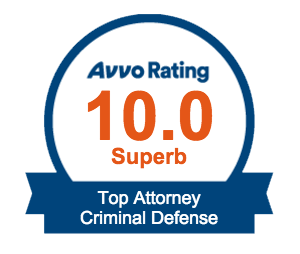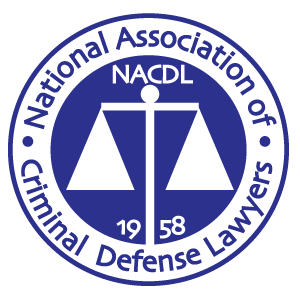The National Highway Traffic Safety Administration estimates that Hit and Run crashes account for about 18% of all accidents in California. Thus, California prosecutors prosecute hit and run offenses with more vigorous prosecution by pressing for the maximum possible penalties to the defendants. Nonetheless, being charged with this offense doesn’t mean that you are guilty. You may have reasonable reasons why you were not able to stop after the accident, or you even might have been wrongly identified. The DUI Defense Attorney in Van Nuys, California, can represent your interest in court and help you to fight the charges, even if the accident was a result of your intoxication.
What is a Hit and Run Offense?
Under California Vehicle Code Sections 20001 and 20002, a hit and run offense occurs when a driver is involved in an accident but fails to stop. It is a requirement that you bring your vehicle to a halt immediately and identify yourself with the parties involved. In case of injuries, medical or emergency aid should be sought promptly such as calling 911.
In California, a Hit and Run offense can fall under any of these two categories: a misdemeanor or a felony. A misdemeanor Hit and Run offense usually involves property. In this case, a considerable portion of someone’s property (including a vehicle) is damaged.
Felony Hit and Run charges apply if there is injury or death to another party. An example of a misdemeanor hit and run offense is driving into someone’s driveway, knocking their vehicle to the extent that a portion of the vehicle is damaged, and driving away without talking to the vehicle’s owner. On the other hand, an example of a felony scenario is when you knock someone's vehicle, thereby injuring the vehicle's passengers.
Note that hit and run offenses do entail not only people and vehicles but also signposts, lamp posts, or even animals. This explains why many people with no previous criminal record can be charged since they did not know they were violating the law.
Since hit and run is a driving crime, the prosecutor may charge you with an additional crime depending on other factors relating to the crime. For instance, an additional drunk-driving charge may apply if you were intoxicated, wet reckless if you were driving erratically in disregard to other people's lives and property, and murder for the death of another person. Alternatively, the judge will use these factors to determine the level of punishment for your hit and run offense.
If you run after hitting another person or their property, you may be charged with hit and run. This means that you need to stop at the scene. The following section addresses the proper protocol for when you cause an accident while driving.
What You Should Do After an Accident
As a driver, the California Hit and Run law compels you to execute some actions after hitting someone’s property or injuring them. Even when the injured persons are passengers in your car, the regulations still apply, and irrespective of whether the accident was avoidable or whether or not you are at fault. In essence, you want to stop in any situation when there is damage to property or injury to another person.
When an accident involves property damage, the driver should:
- Come to a stop as soon as possible while exercising due caution not to impede traffic rules.
- Provide your name, residential address, and car registration number to the owner of the damaged property.
- Make available the driver’s license to the owner of the damaged property upon request.
- Present the name and current residential address of the car owner if he or she is not the rightful owner of the car and;
- Write his or her name, residential address, and car registration number on a note that is noticeable on the damaged property in case the owner is not present. He or she should then report the accident to the nearby police station.
When an accident causes injury to another person, the driver should:
- Stop at the scene carefully without endangering the lives of other motorists.
- Provide any possible assistance to the injured. For immediate medical help, you can always call 911.
- Give the injured or law enforcement officer (if present) your name, current residential address, and the car registration number.
- Show your license upon request to the injured or the law enforcement officer if possible, and;
- Inform the concerned authorities immediately. This could include the police if they haven’t arrived or your insurer. If the accident occurred in a township area, you could contact the local police and the highway patrol if the accident was on the freeway.
What the Prosecution Needs to Prove in a Hit and Run Case
In line with the California Criminal Jury Instructions (CALCRIM) No. 2140 the prosecutor needs to prove the following elements to show that the defendant failed to perform their duty after the accident:
The defendant was involved in the accident
The prosecutors should be able to show that, indeed, your vehicle was involved in the crash. This can be proved by observing the surveillance footage and photographs of the scene. Witnesses can also be interrogated to determine if you were involved in the accident. Since eyewitnesses play a large part in a hit and run case, it is crucial for your criminal attorney to come up with a strategic defense plan in order to defend you in a situation where witnesses point you out as the person who caused the accident.
Did the accident cause injury or damage?
In some circumstances, victims of hit and run offense claim that an accident caused injury or damage while in reality, the alleged victims created the loss themselves. This is motivated by the fact that they want someone else to pay for the damages and save them the problem of doing so. The prosecutor must provide evidence of injury or property damage in order for you to be convicted. Notably, they must confirm that the accident caused the damage or injury.
That you were aware that you caused the accident?
It is the prosecutor’s responsibility to prove that you were conscious of the fact that your actions led to an accident that brought damage or an injury upon someone before driving away. This element can be challenging to prove, especially when there were no noticeable signs of injury to the victim or the damage was too minor to notice immediately. In fact, claiming that you were not aware of the alleged accident can act as a perfect defense strategy for you.
Did you carry out your responsibilities as required by the law?
Proof needs to show that you knowingly failed to carry out the following; stop as soon as possible at the scene, provide the injured or the police officer with any form of identification, or offer the slightest of assistance to the wounded.
Forms of a Hit and Run Offense
Depending on the magnitude of the offense, you may be charged with either a misdemeanor or felony. Further, these categories can take different forms as follows:
Hit and run resulting in injury or death (VEH 20001)
A Hit and Run that results in the wounding of another person other than yourself is termed a “wobbler.” What this means is that the prosecutor can either charge you with a misdemeanor or felony. The extent of your charges will depend on the degree of injuries inflicted on the victim and your criminal record.
Hit and run after vehicular manslaughter
The California penal code section 192(c) describes vehicular manslaughter as the unlawful killing of a human being through negligent driving of a vehicle. Most cases of vehicular manslaughter involve collisions whereby the driver or a passenger succumbs to injuries resulting from the crash.
Hit and run resulting in property damage (VEH 20002)
This form entails damage to property. The property, in this case, includes pets, cars, lamp posts, mailbox, etc. This offense is a felony.
Penalties for a Misdemeanor Hit and Run offense (VEH 20002)
Hit and run penalties vary depending on the form of the crime and other factors such as your criminal record. If it is a misdemeanor (VEH 20002), the following punishments apply:
- Informal probation for a maximum of three years,
- A maximum of six months in county jail,
- A maximum fine of 1,000 dollars,
- Victim restitution, and
- An addition of two points by the Department of Motor Vehicles on your driving record.
You are likely to face a reduced jail term (compared to the maximum of six months in jail) if it is your first time being convicted with a hit and run charge and there are no aggravating factors such as drunk driving.
The judge may allow you to engage in a civil compromise under Penal Code 1377. This would see that the charge is dismissed after you fully reimburse the person that incurred the property damage. However, a civil compromise only applies when there were no aggravating factors such as driving under the influence of alcohol or drugs.
Penalties for Vehicle Code 20001 Offense
This offense is a wobbler. Felony punishments apply if a person was seriously injured or died as a result of the accident. The possible sentence includes two, three, or four years in the state prison. As a misdemeanor, the Vehicle Code 20001 offense carries a maximum jail time of one year and a minimum jail term of 90 days.
In both cases, you may have to pay a fine ranging from 1,000 dollars to 10,000 dollars and restitute the affected persons. Furthermore, you may have to undergo probation and counseling classes.
Can My Felony Hit and Run Charge Be Reduced to a Misdemeanor?
According to Penal Code 17 (b), felony charges can be reduced to misdemeanors under certain conditions. First, the offense must be a wobbler. Second, the defendant should not have served a sentence in state prison. Lastly, the defendant should have completed their probation term, including settling the outstanding fees. Despite these conditions for eligibility, other wobbler offenses cannot be reduced to misdemeanors. Lucky for you, a hit and run offense under VEH 20001 can be reduced to a misdemeanor under the above conditions.
The process involves filing a petition for the reduction of your felony charge. Then, the court sets a hearing date for the petition. The prosecutor must also be served with the motion. During the hearing, your attorney supports the reduction by proving why your request should be granted. On the other hand, the prosecutor will oppose the motion. After hearing both sides, the judge either grants or denies the petition.
If the petition is granted, your criminal record is expunged. This would be good news for you since your current case may be dismissed, even if the court had already pronounced you guilty. This happens in accordance with PEN 1203.4 (6); your attorney immediately files a petition to dismiss the conviction, the court enters a not guilty plea after withdrawing its previous guilty plea, and the court dismisses the complaint.
Legal Defenses for a Hit and Run Offense
There are specific defenses for hit and run charges depending on whether the offense is a violation of VEH 20001 or 20002 VC. The common defenses include:
The injury did not originate from the accident
It could be possible that the crash did not cause the injury in question. Someone could fabricate the truth and place the blame on someone else so that they don’t have to incur costs associated with damages caused elsewhere.
You were wrongly identified
The defendant could be a look-alike, or in another case, the wrong information was provided leading to someone innocent being charged. An example would be when the owner of the vehicle is charged but was not the driver at the time of the accident. The owner may have lent the car out or have someone else drive it because he or she was too drunk to take the wheel. Possibly, the vehicle could have been stolen as well.
You have no reason to believe you injured someone in any way
It is possible for the defendant to have zero knowledge of his or her actions causing an accident that resulted in an injury. An example is the driver of a trailer scraping the paint of a parked car when making a sharp turn without even realizing.
You administered help after the accident
The defendant can prove that they did all that is required of him or her by the law in case of such a crash.
You didn’t willfully desert the scene
This happens when your safety is compromised such as an angry mob at the accident scene or rushing the injured to hospital. You had the best interests at heart, but the type of situation you encountered thwarted your good intentions.
You were the only one injured
A driver could not be charged under the California Vehicle Code 20001 if he/she was the only one injured in the incident.
You lost consciousness, or a medical condition could not allow you to assist
At the moment of the accident, the driver could lose consciousness due to injuries sustained or, in another case, have a condition that limits their mobility. Thus, they could not offer assistance to the victim(s) as required by the law.
You performed all the rightful procedures but are accused falsely of not doing so
After the accident, you could have done all that the law requires but a misunderstanding results in a false accusation of failing to do so. For example, you hit another car, but since the owner wasn’t present, left a note on the windscreen. Unfortunately, it rains, distorting the information or the note is blown away by the wind.
You solved the matter through a civil compromise
A civil compromise is a technique employed by defense lawyers to soften charges or eliminate them. It is an agreement between the owner of the damaged property and the defendant that charges be dropped because the cost of the damage has been paid or will be paid at an agreed time. The law requires that your charges be dismissed if you fully restituted the property owner.
The California Hit and Run Statute of Limitations
The California Hit and Run Statute of Limitations are put in place so that perpetrators cannot be charged for crimes they have committed years ago.
It is a law that prescribes the length of time someone can be charged with a crime. The law determines how much time from the time of the incident the police can still arrest you after you have committed an offense. Initially, it was three years; but as from the beginning of 2014, it was increased to six years. This means that the state of California can still charge you up to six years after you broke the law.
In as much as it gives law enforcement officers more time to gather evidence and equally ensure justice is served to the victims, vital information can get lost as witnesses become unreliable and memories fade away.
Find a Defense Attorney Near Me
If you are facing allegations for a hit and run and the police are seeking a statement from you regarding the accident; you need an experienced defense attorney in Van Nuys, CA, to help you. The DUI Defense Attorney is here to help you with any Hit and Run offense. Contact us at 818-253-1913 to begin the legal representation process.













